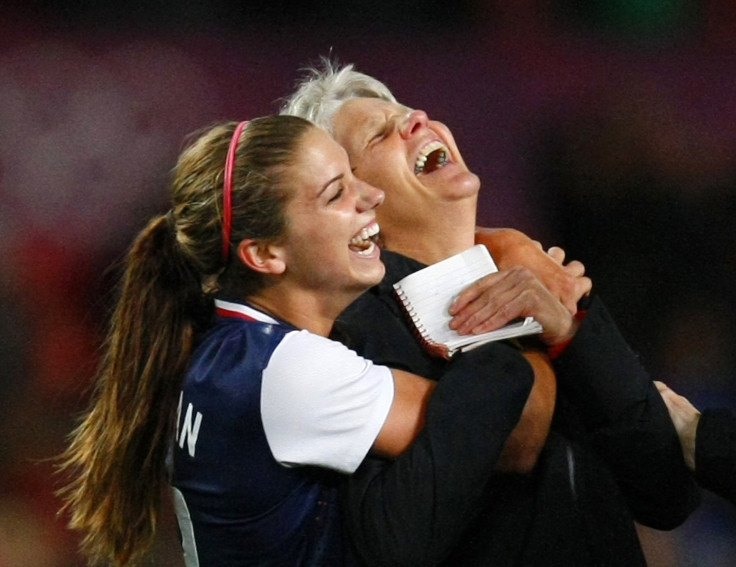USA vs. Sweden Women’s World Cup 2015: Prediction, Preview For Upcoming Group D Game

Having perhaps got more than it bargained for in a testing first assignment against Australia, the United States women’s soccer team is likely to be fully aware of the challenge awaiting when returning to Women’s World Cup action on Friday. Not only is the next opponent, Sweden, ranked fifth in the world, but the team is led by former U.S. coach Pia Sundhage.
The 55-year-old spent a hugely successful four years in charge of the U.S., winning back-to-back Olympic gold medals in 2008 and 2012, coming within a penalty shootout of lifting the 2011 World Cup and losing just six of 107 games. Her farewell in 2012 before returning to coach her home nation was an emotional one, and the U.S. has struggled to fill the void she left behind.
Tom Sermanni was supposed to be the man who led the Americans into the World Cup in Canada. Yet shortly after a poor Algarve Cup last spring, which included defeat to Sundhage’s Sweden and a 5-3 humiliation against Denmark, and following reports of a clash of personalities with the squad, the former long-time Australia coach was surprisingly sent on his way. In his place came Jill Ellis, a former U.S. youth and assistant coach, but who had never led a senior team of professionals before.
Doubt still surrounds whether Ellis was the right choice to lead the team forward, although in her defense the task of taking over a team a little over a year before the World Cup is far from an enviable one. And the major issues that the U.S. faces are also nothing new. In the opening game with Australia they were visible once more, as the U.S. was outplayed in midfield for long spells by a country which it had historically dominated. Eschewing the trend to more a technical style displayed by teams like Germany, France and the Americans’ 2011 conqueror Japan, the U.S. remains heavily reliant on its physicality and always superb fitness. As much as question marks hover over Ellis, they exist too about whether the more technical teams can now also come close to matching the U.S. at its traditional strengths.
Leading the attack against Australia was again Abby Wambach, one of the greatest players in the history of the sport, but now 35 years old. Sundhage stoked the fire of that debate by stating in an interview with the New York Times published this week that Wambach would not be in the starting lineup if she was still in charge.
“I said that to Abby,” she said. “I told her: ‘If I stayed, you would be a sub. The best sub ever. But a sub.’ There was no question about that in my mind.”
Sundhage also didn’t hold back in her comments about midfielder Carli Lloyd, calling her “a challenge to coach,” or Hope Solo, describing the controversial goalkeeper as one of the most difficult players she’s ever had to coach, “especially when it comes to trouble.”
Those comments add plenty of intrigue to Friday’s Group D encounter. And it will doubtless only add motivation to a U.S. team that is fired up by the challenge of winning the country’s first World Cup since 1999. And, while there were reservations about the performance, a 3-1 victory over Australia has put the Ellis’ team in a strong position in what was immediately dubbed “the Group of Death.”
Sweden has already found out to its cost the challenging nature of Group D. Despite leading 2-0 at halftime, Sundhage’s team was hauled back by a thrilling attacking performance from the group’s lowest-ranked team, Nigeria, to eventually tie 3-3. It means the pressure will be firmly on Sweden to get a positive result ahead of its final group game, even with the comfort of knowing that the four best third-placed teams from the group phase will progress to the Round of 16. Ultimately, though, the match could prove to be just the appetizer to a winner-take-all meeting in the knockout stages.
Prediction: USA 1-1 Sweden
© Copyright IBTimes 2024. All rights reserved.











